Tags
Duck Press, Escoffier, Grant Achatz, Industrialist Cuisine, Next Restaurant, nitrogen cavitation, Paris, Tour D'Argent
Last week, Next Restaurant released its first in what I assume will be an endless series of digital cookbooks featuring the recipes of all the courses of each incarnation of the restaurant. They are currently in the midst of their third iteration of the menu, called ‘Childhood’. Prior to that was a ‘Tour of Thailand’. And before that, the opening salvo to their concept, ‘Paris, 1906’.
Why Paris in 1906? Kinda random, right? No, not for these guys. As they state in the opening of their iCookbook:
Cesar Ritz and Auguste Escoffier opened the Ritz Hotel in 1906. A new upper class thrived; visiting the Ritz, along with restaurants such as Maxim’s, became something more than just dinner. Part fashion show and part social scene, the restaurant was now the entertainment.
Paris, 1906 — Escoffier at the Ritz was an easy choice as our opening menu at Next.
Ah, Escoffier. As Heston Blumenthal said, “We eat how we eat because of Auguste”. They decided to go boldly into the future by acknowledging the past. I, too, have a fondness for what I jokingly refer to as Industrialist Cuisine. And there is one dish on their menu in particular that exemplifies the restaurant as entertainment theme circa 1906: Caneton Rouennais à la Presse. Why? Because they used a big old brass contraption to press an entire duck to get at its juices. Entertainment, indeed.
The Duck Press, A History
From what I’ve found, pressed duck was created in the early 19th century by Mèchenet, a restaurateur from Rouen, France. It eventually made its way to the Tour D’Argent in Paris. Here is a facinating excerpt from Where Paris Dines by Julian Street in 1929:
When I first knew the Tour D’Argent it was a plain place with a wooden floor covered with sawdust, but it was none the less a temple of gastronomy, for it was presided over by old Frédéric Delair who, with his high bald forehead, his steel-rimmed spectacles, and his whiskers, resembled Ibsen or Thackeray, and who, like Ibsen and Thackeray, was an artist, though in a different field.
Frédéric’s fame grew principally out of the caneton pressé he used to serve, though other specialties, such as his bisque of crawfish, were almost as celebrated. For many years before his death, which occurred in 1910, when he was 70, Frédéric was well known to countless American and English travelers who went to the Tour d’Argent not only to eat the famous pressed duck, but also to watch the ritual preparation. Frédéric himself used always to perform the rites, and people at the tables put down knives and forks and stared, fascinated, as, with waiters grouped round him in devout attitudes, he deftly carved the bird, placed the carcass in the silver press, mixed the savoury brown sauce, and with it anointed the tender slices.
We are told that duck as a specialty was introduced at the Tour d’Argent by one Lecoq, a former Imperial Chef, who was proprietor of the restaurant in the last days of Napoleon III, but the custom of numbering the ducks and giving each guest a card bearing the number of the duck of which he has partaken was introduced by Frédéric, and has been continued since by Monsieur André Terrail, the present proprietor. The numbers now (in 1929) run well above one hundred thousand.
Over a million ducks have been served at this point. I have not heard if Next also gave out cards to their guests during their service. One can hope. Here’s a great video report from The Guardian from almost exactly one year ago about eating the pressed duck at Tour D’Argent.
It is served like this in Paris:
And in Chicago at Next, they serve it like this:
And so I decided to dive in and replicate the Caneton Rouennais à la Presse from the inaugural menu of Next Restaurant. Quite the journey. Let me show you.
On The Hunt For A Duck Press
First things first. In order to do this, I needed access to a duck press. I mean, you can buy them from Sur La Table for $2000, but that’s a bit steep for one dish, don’t you think? So I had to find one. Then I had to borrow it.
I remembered an old friend of mine who works at Le Pichet, a local French restaurant. Founded in 2000 by Jim Droham, it’s a wonderful cozy place down by the Pike Place Market serving up French classics. Perhaps they have one. It was a stretch, but worth a shot. I texted her and asked if they happened to have one, and if I could use it if they did. She replied:
So a holiday miracle occurred, and I confidently went down to Le Pichet to pick it up. There it was, perched at the bar. A snazzy little decoration, for sure, but soon to be used for its original intention.
Jim was there when I dropped by, and I introduced myself and thanked him to letting me use his duck press. I mean, he didn’t even know me! He pointed out it was a gift to him and even was engraved with his name. I was taken aback by his generosity. It gave the project an extra weight. This duck press didn’t just needed to be used, it needed to be honored. I gratefully accepted the opportunity and took the big brass duck home in the dark rainy Seattle night.
Issues That Pop Up: Recipe Management
Before we dive into Next’s version of Caneton Rouennais à la Presse, let’s see what Escoffier’s recipe is, from his famed work, Le Guide Culinaire, dish number 3476:
Roast the duckling for 20 minutes and send it to the table immediately, where is is finished as follows:
Remove the legs and keep for another use, cut the breasts into thin slices and arrange them overlapping on a warm dish; season them.
Chop up the carcase and press it, sprinkling with some good red wine. Add a little brandy to this juice and sprinkle it over the sliced duck; reheat the dish thoroughly over the chafing lamp without allowing it to boil and serve immediately.
Wow. That seems easy. Next’s version is twenty one paragraphs versus the three Escoffier gives us. For instance, what happens to the duckling before we roast it? What if we want to use the legs? Turns out there’s a lot of assumed knowledge on Escoffier’s part. And to get it done, I had to figure out what came in what order and how long so I could bring it all together. I had to, in fact, figure out what was next.
I needed to brine the duck, cook the breasts, cook the legs in fat I needed to render, roast the carcass, create a duck stock, create a duck jus, press the duck, create a sauce, finish the breasts and legs, and plate it. So OK then. I determined the order of the components to be created and the time needed to make it happen:
1. Create duck brine – 30 minutes
2. Brine carcass – 24 hours
3. Brine duck breasts – 4 hours
4. Salt duck legs – 4 hours
5. Create duck stock – 8 hours
6. Create duck jus – 4 hours
7. Render duck fat – 30 minutes
8. Cook duck legs – 4 hours
9. Cook carcass – 1 1/2 hours
10. Cook duck breasts – 25 minutes
11. Press duck carcass – unknown
12. Create sauce – 30 minutes
13. Plate and serve
So to do it properly, I needed around 50+ hours. I, however, told Jim I would only need his press for a day. Only after my promise did I carefully read the recipe and see what was involved. There was also the fact that the recipe wasn’t designed for a single home cook. For example, the recipe calls for sixty duck legs, not four. So I did what one always does in the kitchen – I improvised.
Creating a French Classic
I created my shopping list and ran around town to get the necessary ingredients. I found the ducks at Uwajimaya, where they only had two left. I quickly snatched them up. I went to three other stores to gather what I needed (juniper berries aren’t on the shelves of every store), and I had what I needed to get to work.
Using the iPad to follow the recipe proved to be frustrating. Digital cookbooks – for me, at least – aren’t quite there yet in terms of usefulness. Yes, size and weight-wise, the iPad is welcome in the kitchen. But flipping digital pages back and forth without the ability to take notes with greasy fingers proved to be impractical. Since I needed to calculate the ratios in order to get dish down to four servings, I found it easier to follow the recipe with it on paper. So I took screen grabs of the separate component recipes, enlarged them, and printed them out. I haven’t tried a lot of digital cookbooks, but I think note taking features would be welcome. Come to think of it, if the upcoming Next cookbooks had scaling ratios listed a la Modernist Cuisine, that would very helpful as well.
But regardless, I now had what I needed to cook this thing. Let’s do this.
Duck Brine
The brine was pretty straightforward, even if they did try to snag me at the first ingredient: water. The recipe calls for “3000 g (17 lb 10.2 oz)”. Except that 3000 grams is actually 6.6 pounds. Too bad they can’t remotely update the cookbook. That’d be cool. Anyway, I made it pretty close to the recipe, except for the lemons. It requires 100 grams of lemon zest. Off of one lemon I got one gram, which means I would need to zest 100 lemons. I decided against it.
Preparing The Duck Breasts
Next up (pun intended) was breaking down the ducks. I have never broken down a duck. How do I do it? A quick Internet search, and I found this on YouTube:
He made quick work of it, and so did I.
Trim away any sinew and silverskin from the underside of the removed breast.
Wow. That’s a pain in the ass. Trying to knick off all these little slivers without destroying the breast meat is not easy. And to think there’s some guy doing it all day in the back kitchen. Mad respect, yo.
From there I need to vacuum seal them with brine for four hours. I was concerned the brine hadn’t steeped long enough to get a good flavor from all its components. Should I just wait until the next day? But I needed to return the duck press. Then it hit me: I could use the magic of nitrogen cavitation. I filled my cream whipper with brine, shot it with a cartridge of N2O, expelled it, and had nice flavorful brine. August Escoffier, meet Dave Arnold. The pleasure is all mine.
After 4 hours, they were rinsed, sealed again and dropped in the sous vide bath for 25 minutes. They were ready to go and I moved forward.
Duck Stock
It is to the production of perfect stocks that the sauce cook should devote himself – the sauce cook who is, as the Marquis de Cussy remarked, ‘the enlightened chemist, the creative genius and the cornerstone of the edifice of superlative cookery’.
– August Escoffier, Le Guide Culinaire, Chapter One: Sauces
A good meat stock requires bones. So one of my two carcasses became spoken for. This is where it gets a bit gory.
I broke it down into manageable pieces and put it water in with onion, leek, carrot, thyme and peppercorns. I let it reduce and do its thing. Since I was doing a much smaller batch, I halved the time to 4 hours. It seemed to work fine.
Duck Jus
Here, I basically did another duck stock using the duck stock I had created, using duck bones again (but now roasted), along with madeira and butter, garlic, shallots and thyme. I let that cook for four hours and reduced it until I had my first jus. Lovely duck jus. Magnifique.
Duck Leg Confit
So of course all of this wasn’t happening in sequence. I was getting things done while the stocks and sauces were reducing. The legs were a project in themselves. They were packed in salt and peppercorns for four hours, and then needed to be vacuum sealed with 100 grams of duck fat for each leg. In my case, 400 grams. So I needed to render the fat. I collected my trimmings (Isn’t that a lovely word for hacked bits of flesh? “Trimmings”? Lovely, I say.) and boiled them for 30 minutes and strained out the bits. I poured the fat into the bag and sealed it up.
The next step was to cook them sous vide for four hours at 88C. This was a problem. You see, as I had a habit of destroying Scott’s circulators, he punished me by having mine only go up to 80C so I wouldn’t melt anything. Eight degrees is a pretty significant difference. How should I solve this? I looked up at my combi oven. Oh, yes. The temperature isn’t as consistently precise as a sous vide bath, but much closer to 88C. It would do fine.
Afterwards I plunged them into ice and the refrigerator. And my first confit was made.
Pressing The Duck
OK, are you still with me? Here’s the good part. This is nuts. Check this out.
I took the second duck carcass and brined it overnight. From there it went into the sous vide bath for an hour at 62C.
From there I put it in a saute pan, searing on all sides and basting it with butter. After a few minutes the whole pan was thrown in the oven for 25 minutes at 350F/177C.
A beautifully roasted duck was created. Let’s press this sucker.
I’m not sure if I want to write “I cut the duck into small pieces and placed them, along with the duck’s organs, inside the duck press” or “I hacked the carcass apart and shoved the pieces and the duck’s innards into the juicing machine”. Take your pick.
And I began to turn the wheel, the heavy plate slowly descending down, until the pressure yielded the precious liquid.
A surprising small amount of precious liquid. Let’s review:
- Twenty four hour brine
- One hour in the sous vide bath
- Seared and basted in butter
- Twenty-five minutes in the oven
All that for a small amount of liquid to add to the final sauce. You have to love the complete audacity of it. Oh you, French! But, in the original recipe, the whole duck was roasted and the breasts and legs were removed afterward. The separate sous vide preparations of the breasts and legs are Next’s innovations on the recipe. Oh you, Grant!
Plating The Dish
So I finally had all the components prepared. I mixed the extracted duck liquid with cognac and red wine for the final sauce. The seared the skin on the breasts and legs. I cut up the breasts and plated it up.
As one would expect from cooking sous vide, the meat was incredibly tender and moist. And the sauce was earthy and amazing. One person said it was the best duck they ever had. Well, a French classic designed by Michelin starred chef – how could you miss?
I learned so much from this recipe. I broke down duck for the first time. I made my first jus. I rendered my first duck fat. I made my first confit. I managed to light a pan on fire with madeira wine. I grabbed a blindingly hot saute pan fresh out of the oven with my left hand, then again minutes later with my right hand. I learned you can chip your chef’s knife if you hack a carcass apart with it. And I pressed a duck. Whether I was using nitrogen cavitation or reducing in a cast iron pan, the end goal was the same – an amazing sensory experience, a rare delicious delight. And all the technology, old and new, got me across the finish line.
So, the question is: What’s next?
Jethro

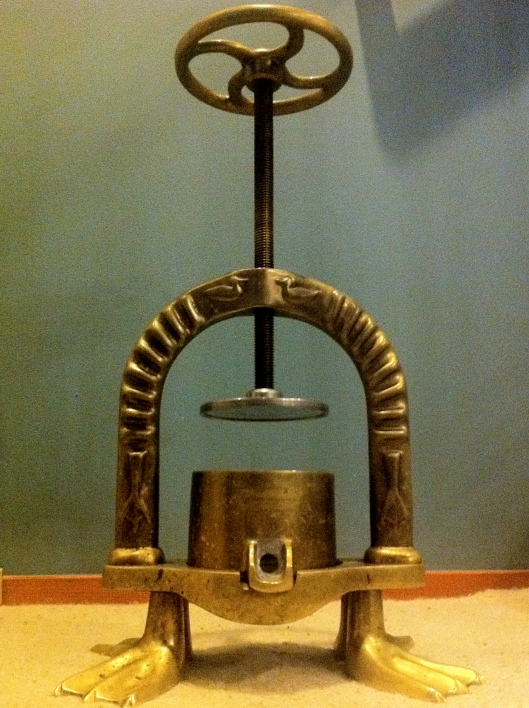
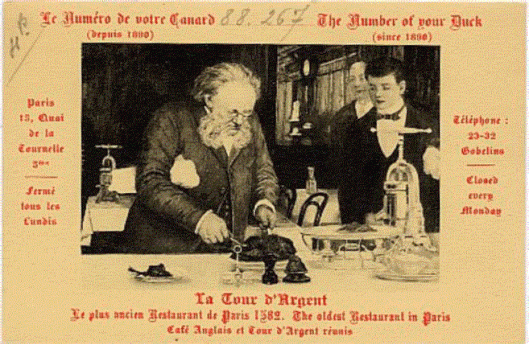

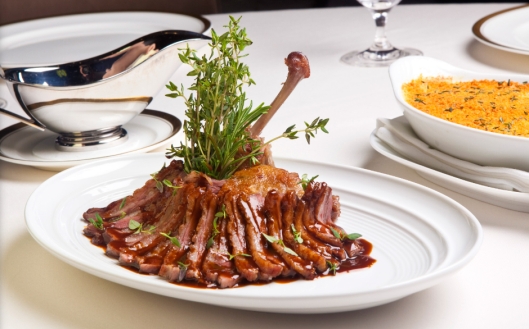
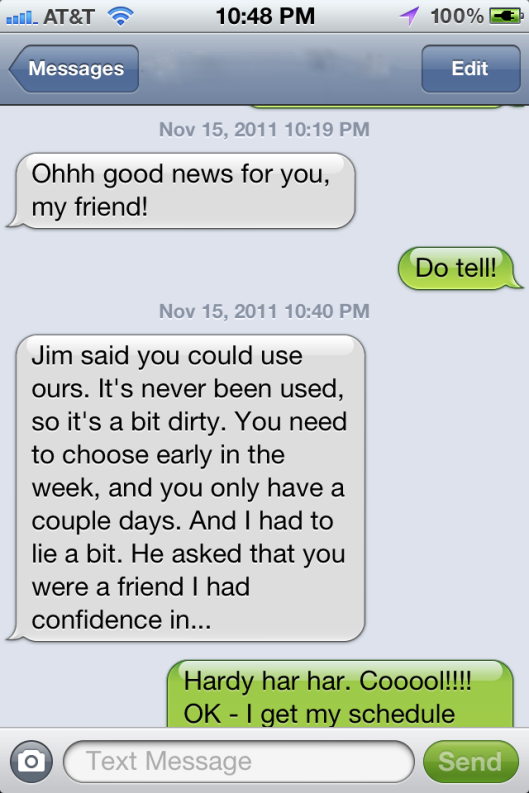
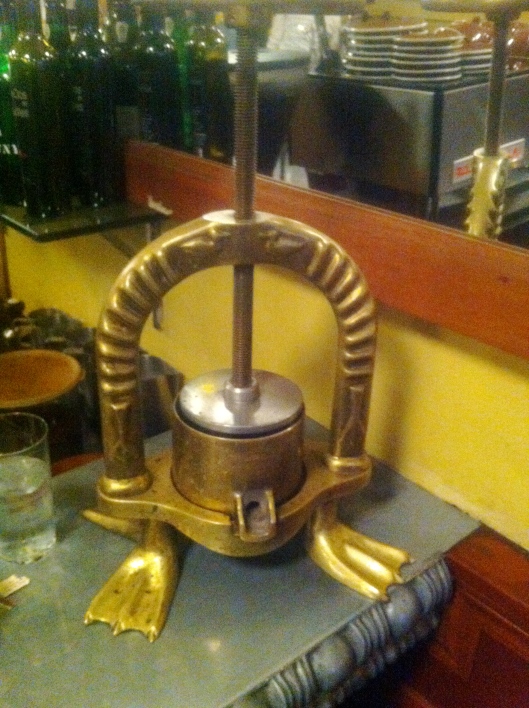
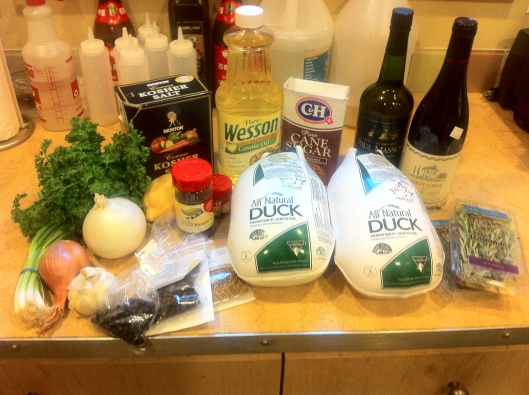
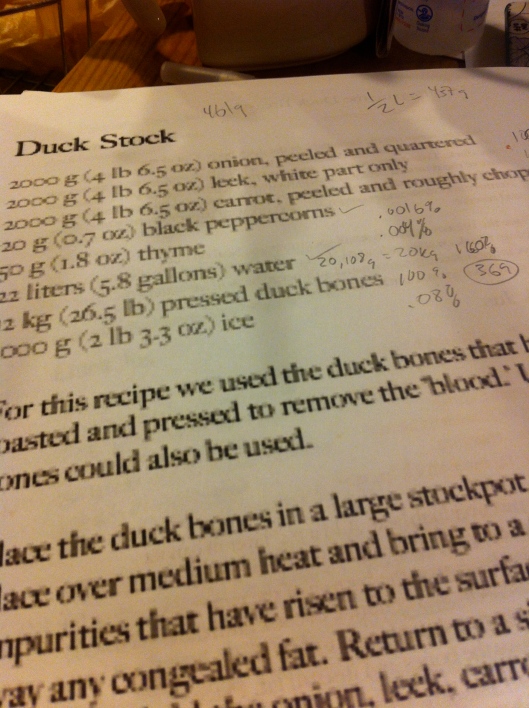
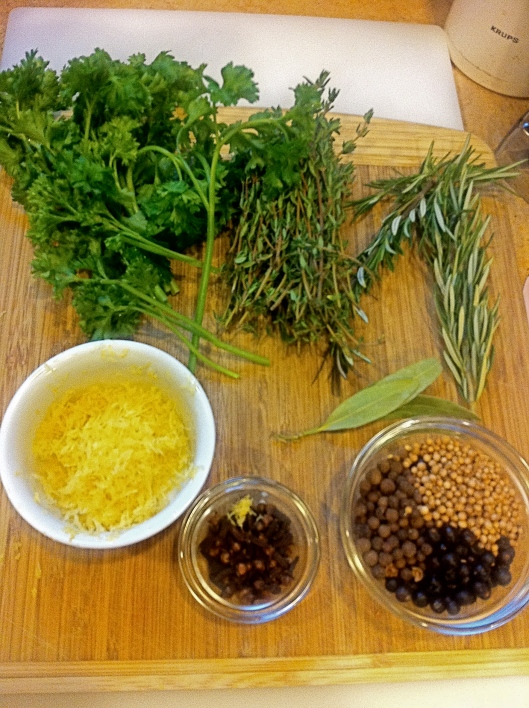
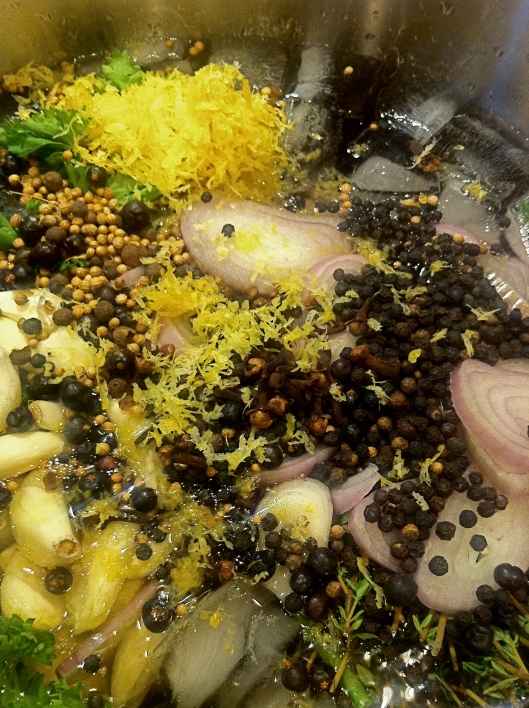
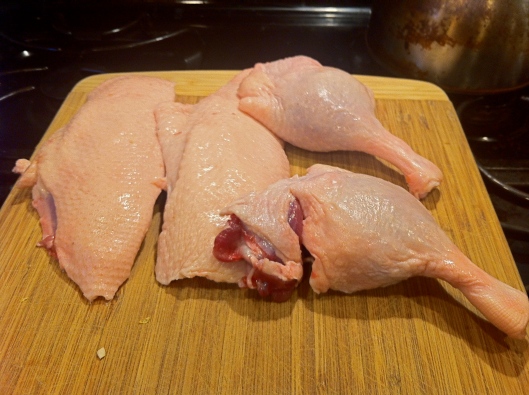
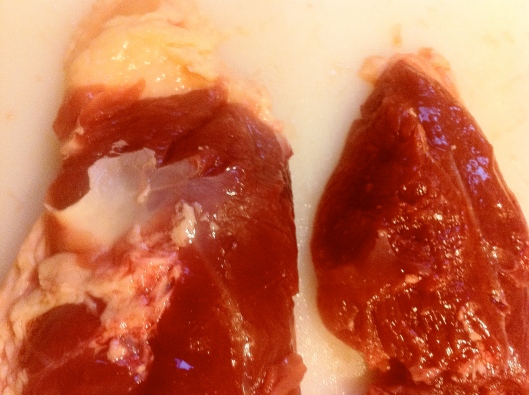
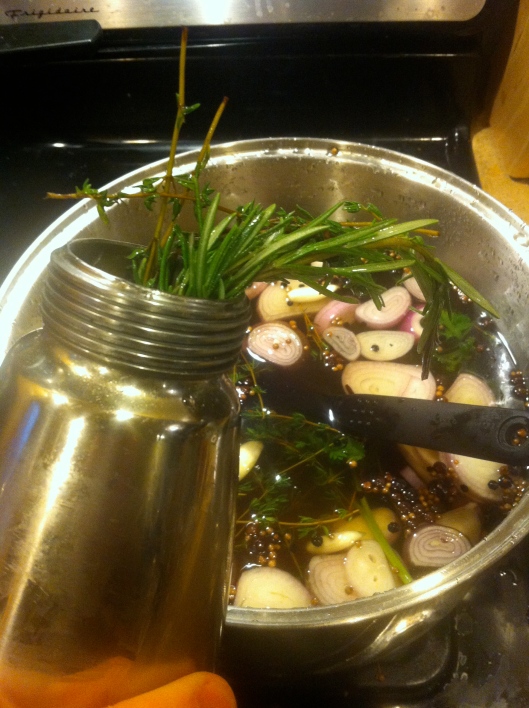
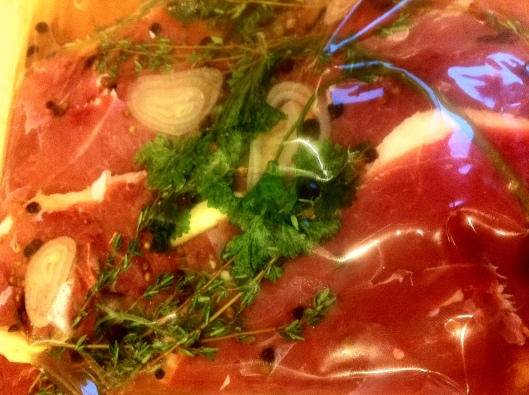

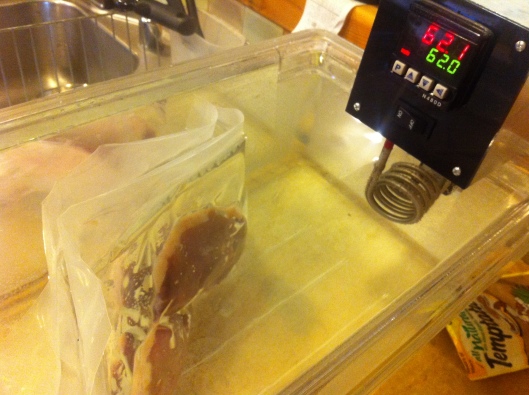
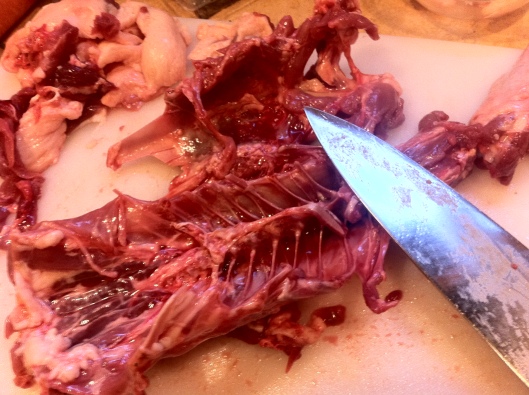
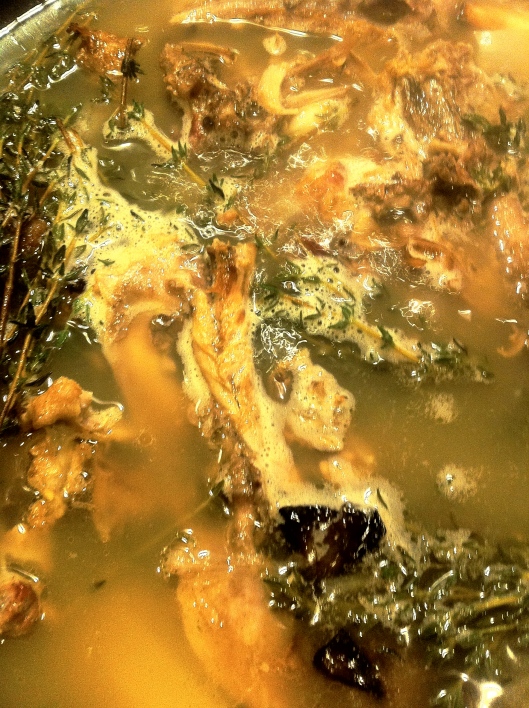
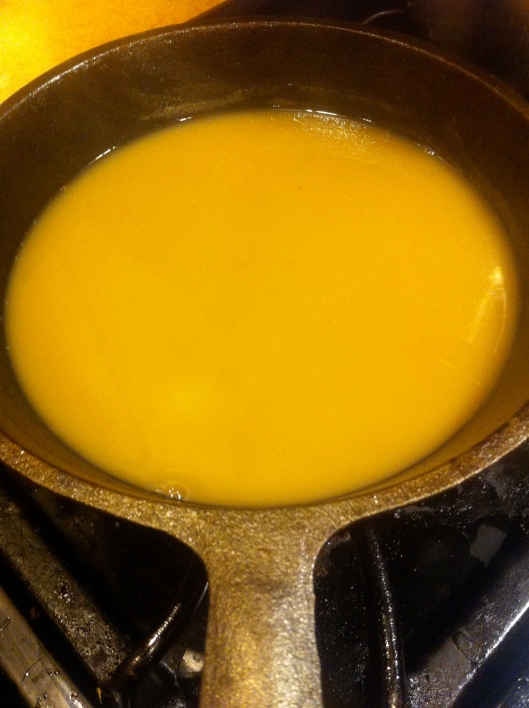
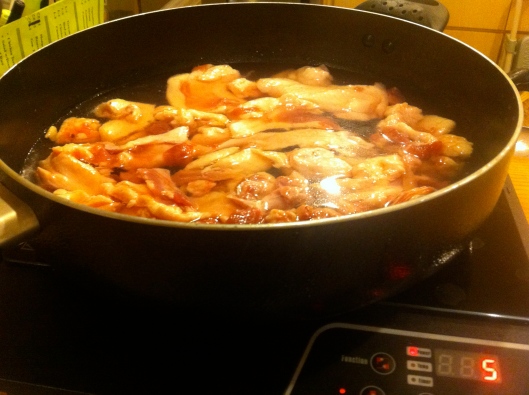
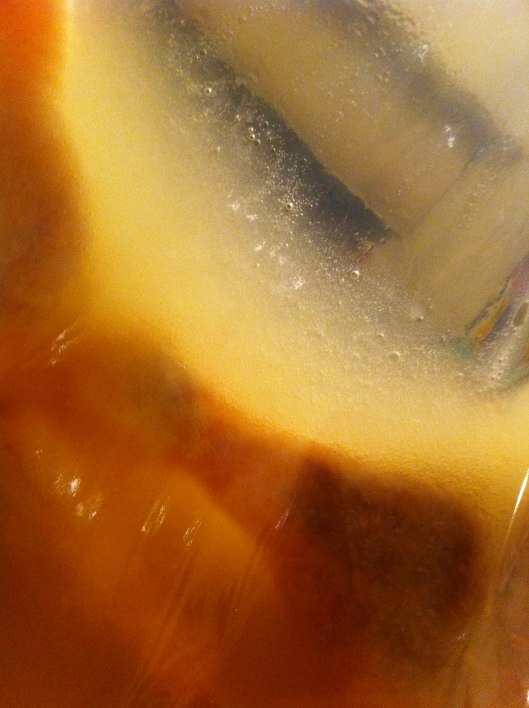

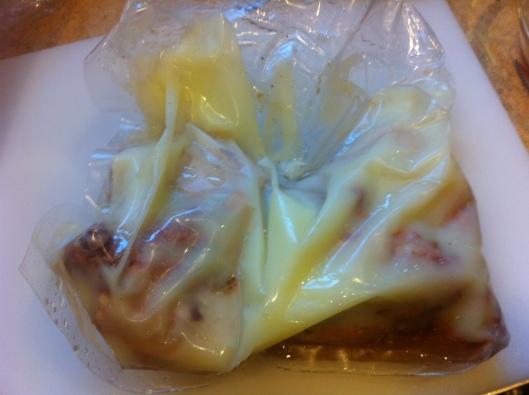
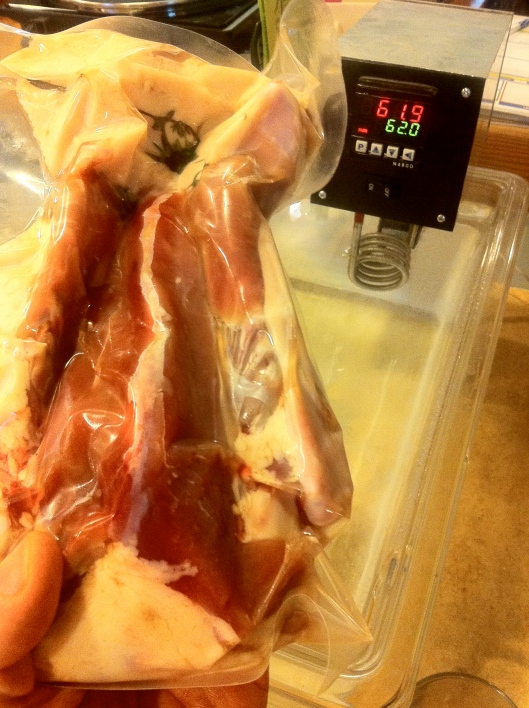
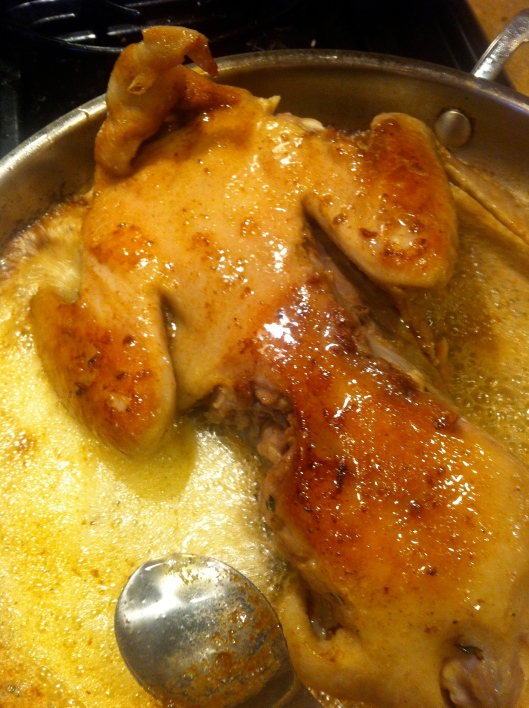
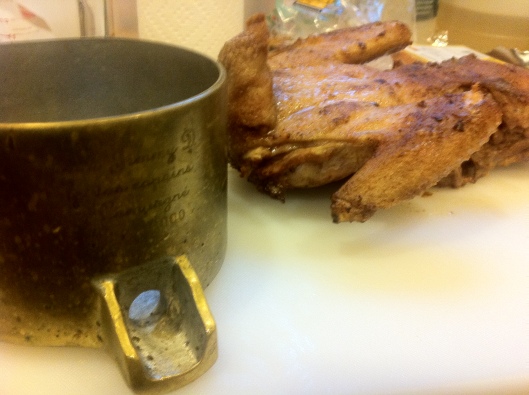
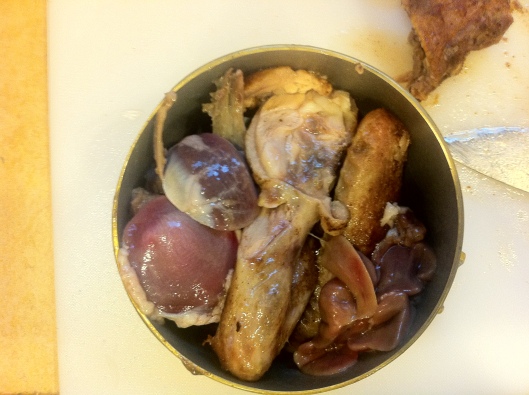
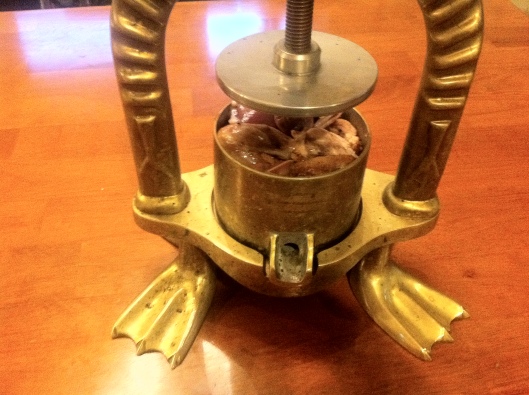
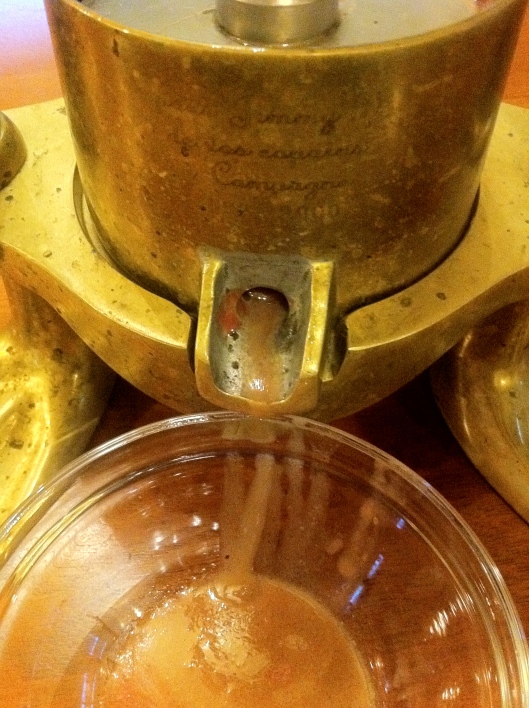
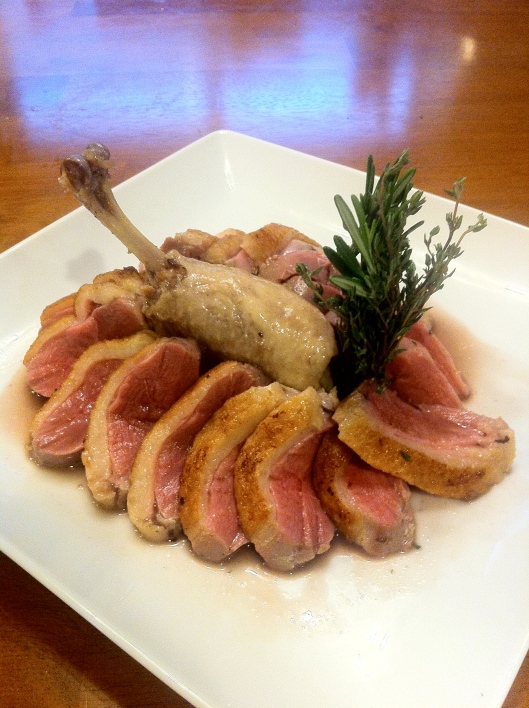
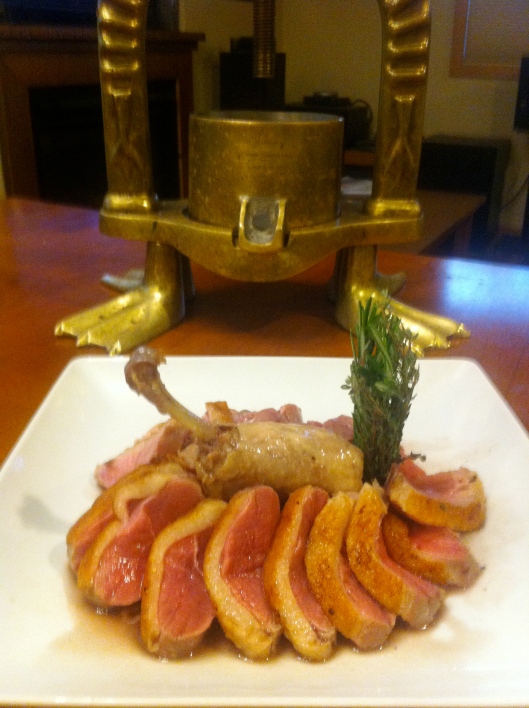
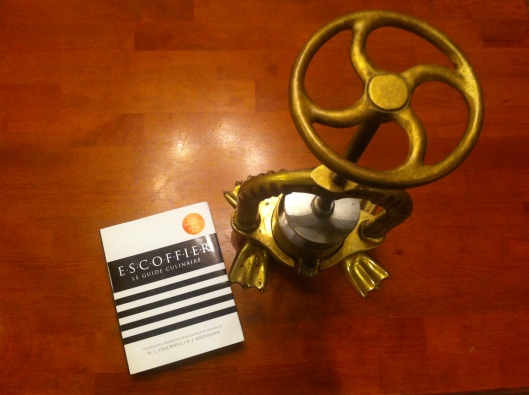
This is amazing, and so inspiring. Thanks for sharing!
Marc
Thanks Marc. Viva le quack!
Love it! Nice work, Jeth. Too bad Escoffier didn’t have a pressure cooker – I think that could have made much easier work of all the sauces 🙂 Also, I wonder what the force of the duck press is compared to, say, the centrifuge. I think you know where I’m going with this…
Oh man, I should have centrifuged the duck after the press! Dangit!!
Pingback: Weekly Roundup of Science and FOOD
Jethro, I try to share links every week under the heading “inspiration” and this definitely fit the bill. I’m saving it to my kindle to reread whenever I think to myself “no, that recipe’s too much work”. Keep it up!
Finally got a chance to read this post (first time I tried I was a bit too wrapped up in my personal dramas, so I waited till I could give it the proper deserved attention). So glad I did! Thank you for sharing your experience, all of the back ground and historical tidbits and, of course, the delightfully “juicy” details. 🙂 Love and miss you!!
Aw, thanks. I hope you’re doing just…ducky! (*groan*) 🙂
I got an extraordinarily good chuckle out of this post when, upon first loading it up, I saw the top photo and thought to myself, “that’s looks just like Le Pichet’s one!”.
Which it is. 🙂
Brilliant write-up. More like this!
Pingback: Weekly Roundup of Science and FOOD | Science Fare
Pingback: Modernist Cuisine At Home: Hungarian Beef Goulash « Jet City Gastrophysics
Pingback: The Duck Press
Pingback: Modernist Cuisine At Home: Barbeque Rubs And Another Sauce | Jet City Gastrophysics